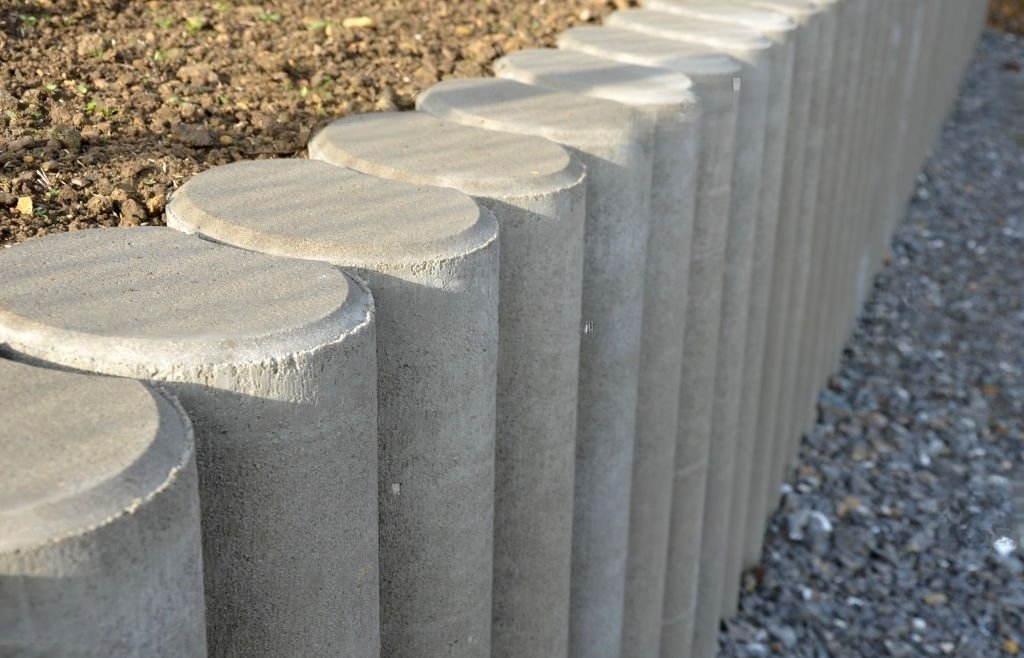Building a retaining wall on a sloped yard can be a challenging but rewarding task. A concrete retaining wall design can add functionality to your yard and enhance the aesthetic appeal of your property. Retaining wall designs are varied and offer different benefits, so choosing the right one for your needs is essential. One of the most popular choices is a concrete retaining wall block, which is durable and long-lasting.
Before starting the project, you must plan and prepare the area where you will build the retaining wall. This involves marking out the size, measuring the slope, and determining the height of the wall. Following any local building codes and regulations when building a retaining wall is essential, so check with your local authorities before starting.
Once you have a plan, you can begin building the retaining wall. The first step is to dig a trench for the base of the wall, which should be level and deep enough to accommodate the first course of concrete retaining wall blocks. As you stack the blocks, use a group to ensure the wall is straight and level.
Proper drainage is one of the most critical aspects of building a retaining wall. Water can build up behind the wall without adequate drainage and cause damage. You must install drainage pipes and gravel behind the wall to prevent this. This will allow water to flow away from the wall and avoid erosion.
Building a retaining wall on a sloped yard can be challenging, but with the right tools, materials, and know-how, it can be done successfully. Following these tips and using a concrete retaining wall block can create a functional and attractive addition to your yard.
How To Build A Retaining Wall On Slope?
Building a retaining wall on a slope can be daunting, but it can be done successfully with the suitable materials and techniques. A concrete retaining wall is famous for its strength, durability, and low maintenance requirements. This blog will provide a step-by-step guide on building a concrete retaining wall on a slope.
The first step is to determine the size and location of the retaining wall. This will depend on the slope’s angle and the weight of the soil that needs to be retained. Once you have determined the size and location of the wall, you can start preparing the site by removing any obstacles, such as rocks or tree stumps.
The next step is to lay a foundation for the retaining wall. This will involve digging a trench and filling it with crushed stone or gravel to create a stable base. The foundation should be level and compacted to ensure the wall’s stability.
After the foundation is in place, you can begin laying the concrete retaining wall blocks. These blocks should be staggered and interlocked to provide maximum stability. You may need to cut some blocks to fit into smaller spaces, so use a saw with a diamond blade for precision cuts.
Once the blocks are in place, you can backfill the space behind the wall with soil. This will help support the wall and prevent dirt from eroding from the slope. You can also add drainage pipes or gravel to prevent water from building up behind the wall.
Building a concrete retaining wall on a slope requires careful planning and execution. With the right tools and techniques, you can create a solid, durable fence that provides support and stability for years.
How To Build A Small Retaining Wall On A Slope?
Retaining walls are an excellent way to improve the look and functionality of your outdoor spaces, especially if you have a slope on your property. A small retaining wall can add visual appeal while preventing soil erosion and controlling water runoff. This post will guide you through building a small retaining wall on a slope using concrete retaining wall blocks.
First, you need to choose the right retaining wall design that suits your needs and the style of your property. There are various retaining wall designs, including tiered walls, curved walls, and straight walls. Your choice will depend on the slope’s degree, the height of the wall, and the materials you prefer.
Once you have selected the design, the next step is to prepare the site. Clear the area of any debris and vegetation, and then dig a trench for the base of the retaining wall. The depth of the track should be at least one-third of the height of the wall. Add a layer of gravel or crushed stone to the bottom of the trench, and then compact it using a tamper or plate compactor.
Next, you must lay the concrete retaining wall blocks according to your chosen design. Follow the manufacturer’s instructions carefully, ensuring each block is level and plumb. Backfill the space behind the wall with gravel or crushed stone and compact it as you go. Finally, cap the top of the retaining wall with a row of caps that match the block style.
Building a small retaining wall on a slope can be challenging, but it can be done with the right tools and patience. Proper preparation and construction are crucial to ensure a sturdy and long-lasting retaining wall.
How To Build A Wood Retaining Wall?
A wood retaining wall can be a great way to add structure and dimension to your outdoor space while serving a practical purpose. Whether holding back soil and preventing erosion or creating a raised garden bed, a wood retaining wall is a versatile and attractive option. In this post, we’ll explore building a wood retaining wall step-by-step.
Before you start, it’s important to note that a wood retaining wall may only be suitable for some applications. A concrete retaining wall design may be better if you’re dealing with hefty loads or high walls. However, a wood retaining wall can be an affordable and visually appealing solution for smaller projects and lighter loads.
You’ll need to gather your materials and tools to build your wood retaining wall. You’ll need pressure-treated lumber, rebar, gravel, drainage fabric, and a circular saw, drill, and level. Once you’ve gathered your supplies, you can begin digging the trench for your wall and installing the first course of lumber.
From there, you’ll need to continue layering and securing the lumber using rebar and gravel until you reach your desired height. Using a level at each stage is essential to ensure that your wall is straight and level.
Overall, building a wood retaining wall can be a rewarding and satisfying project that adds beauty and function to your outdoor space. With careful planning and attention to detail, you can create a durable and attractive structure that will serve you well for years.





